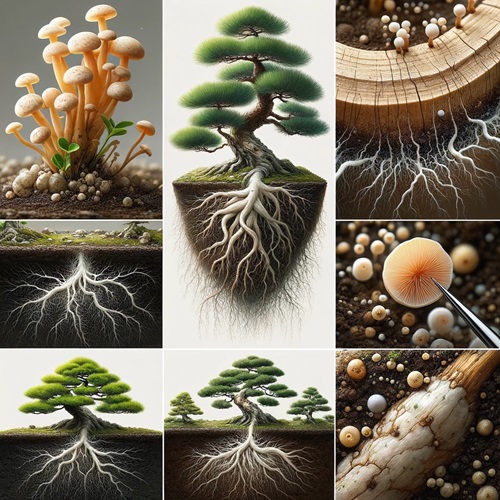Introduction
Bonsai trees, those emblematic miniature trees, captivate with their grace and complexity. At the heart of this fascination lies an often overlooked but essential element to their vitality: mycorrhizae. In the world of bonsai, these symbiotic associations between plant roots and fungi are more than mere coexistence; they represent a sophisticated and beneficial alliance that profoundly influences the health and development of these miniature trees.
Mycorrhizae play a crucial role in bonsai cultivation. They facilitate the absorption of nutrients and water, increase the tree's resistance to diseases and environmental stress, and contribute to an optimal soil structure for root growth. This symbiosis becomes even more important in the context of bonsai, where the root environment is limited and the need for efficient resource management is high.

The aim of this article is to demystify the functioning of mycorrhizae in the world of bonsai. We will explore the different types of mycorrhizae, their essential role in a bonsai's ecosystem, and the mechanisms by which they improve the health and growth of the tree. Additionally, we will examine how bonsai cultivators can encourage and maintain these valuable symbiotic relationships to optimize the health and aesthetics of their trees.
Understanding mycorrhizae opens a new dimension in the art of bonsai, revealing not only the visible beauty of these trees but also the invisible richness of their interactions with the natural world. Let's dive together into this fascinating aspect of bonsai culture.

















